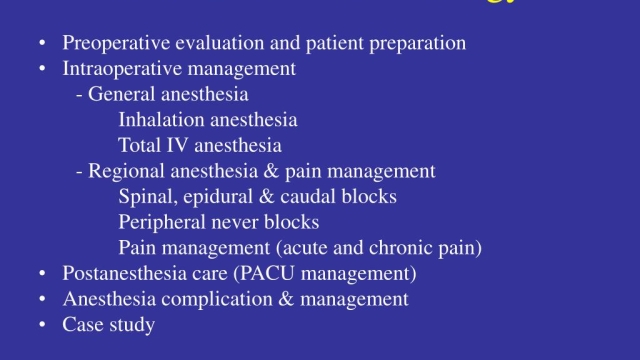Dental procedures have come a long way, and with advancements in dental anesthesia, the experience of visiting the dentist has transformed into a more comfortable and relaxed one. The world of dental anesthesia has been a game-changer, leaving behind the days of fear and pain during dental treatments. Thanks to anesthesia, patients can now undergo procedures with minimal discomfort, enhancing their overall dental experience.
Anesthesia plays a vital role in dentistry, particularly in office-based procedures. Dental anesthesia refers to the administration of drugs that temporarily numb or induce a state of deep relaxation, enabling dentists to perform procedures without causing discomfort or pain to the patient. It not only eliminates physical discomfort but also reduces anxiety and fear associated with dental treatments. From simple procedures like tooth fillings to more complex ones such as root canals or extractions, dental anesthesia has become an essential component of modern dentistry.
One popular method of dental anesthesia is sedation, which allows patients to enter a peaceful and relaxed state during their dental visit. Sedation can be achieved through different means, including oral medication, intravenous administration, or inhalation. By inducing a state of tranquility, sedation ensures that patients undergo their dental treatments stress-free and without experiencing any significant pain. The use of sedation has revolutionized dental care, offering comfort and peace of mind to millions of people who previously dreaded dental visits.
With these advancements, dental anesthesia has proven to be a blessing for both patients and dentists alike. By minimizing discomfort and anxiety associated with dental treatments, it allows for smoother procedures and promotes better oral health. The world of dental anesthesia continues to evolve, ensuring that dental visits are no longer a source of fear but rather a blissful experience, where pain becomes a thing of the past.
Types of Dental Anesthesia
There are various types of dental anesthesia that are used to provide a pain-free and comfortable dental experience. These anesthesia options help to create a blissful relief for patients undergoing dental procedures. Let’s take a closer look at some of the common types of dental anesthesia available.
Local Anesthesia: One of the most commonly used types of dental anesthesia is local anesthesia. It involves the administration of medication to numb a specific area of the mouth where the dental procedure is being performed. Local anesthesia ensures that patients do not feel any pain or discomfort during the treatment. It is typically injected into the gums or given as a topical gel.
Nitrous Oxide (Laughing Gas): Another form of dental anesthesia is nitrous oxide, commonly known as laughing gas. This colorless and odorless gas is mixed with oxygen and inhaled through a mask. Nitrous oxide helps relax patients by reducing anxiety and creating a sense of euphoria. It is a safe and effective form of dental anesthesia that wears off quickly after the procedure.
IV Sedation: For more complex dental procedures or for patients with severe anxiety, intravenous (IV) sedation may be recommended. IV sedation involves the administration of medication through a vein to induce a state of relaxation and deep sedation. Under IV sedation, patients are still able to breathe on their own, but they may not have any recollection of the procedure afterwards.
These various types of dental anesthesia provide dentists with the ability to customize the level of sedation based on the needs and comfort of the patient. By utilizing these anesthesia options, dental professionals are able to create a relaxing and pain-free environment for patients, ensuring a blissful dental experience.
Benefits of Office Anesthesia
Sedation
In recent years, dental anesthesia has revolutionized the world of dentistry, providing patients with a range of benefits that were previously unimaginable. With the advent of office anesthesia, the dental experience has become significantly more comfortable and less stressful for patients. From reducing anxiety to enhancing pain management, office anesthesia has emerged as a game-changer in the field of dentistry.
One of the primary advantages of office anesthesia is the profound reduction in patient anxiety. Dental procedures can often evoke feelings of fear and unease, leading to delayed or avoided dental care. However, with office anesthesia, patients can now undergo necessary procedures with minimal stress and anxiety. The sedative effects of anesthesia help create a calm and relaxed environment, promoting a more positive dental experience overall.
Furthermore, dental anesthesia plays a crucial role in enhancing pain management during procedures. By numbing the specific area where the dental work will be performed, anesthesia ensures that patients do not experience any discomfort or pain. This not only allows for smoother and more efficient dental procedures but also improves patient satisfaction and compliance. With office anesthesia, patients can confidently undergo treatment knowing that their comfort is a top priority.

Another significant benefit of office anesthesia is its capacity to facilitate complex dental procedures. For patients requiring extensive dental work or those with dental phobias, the availability of sedation allows dentists to safely perform procedures that would otherwise be challenging or impossible. Office anesthesia enables dentists to complete multiple treatments in a single visit, saving patient’s time and reducing the overall number of dental appointments required.
In conclusion, office anesthesia has brought about a multitude of benefits to the field of dentistry. By reducing anxiety, enhancing pain management, and enabling complex procedures, dental anesthesia has truly transformed the dental experience for patients. As this innovative technique continues to evolve, it is expected that the realm of dental care will become even more comfortable and accessible, allowing individuals to prioritize their oral health with confidence.
Understanding Sedation Dentistry
Sedation dentistry offers a breakthrough solution for those who experience anxiety or fear when visiting the dentist. By providing a relaxed and calm environment, dental professionals can carry out procedures with ease and ensure patient comfort throughout.
Dental anesthesia plays a key role in sedation dentistry. This specialized form of anesthesia helps numb specific areas of the mouth, enabling patients to undergo treatments without feeling pain or discomfort. With dental anesthesia, patients can overcome their fear and receive the necessary oral care they require.
Office anesthesia, another aspect of sedation dentistry, allows patients to undergo dental procedures while in a clinic setting. This approach eliminates the need for hospitalization, making it convenient and cost-effective. Dental professionals are adept at administering office anesthesia, ensuring that patients remain comfortable and relaxed throughout their treatment.
In summary, sedation dentistry, supported by the use of anesthesia and office anesthesia, offers a unique opportunity for patients to receive stress-free dental care. By creating a peaceful environment and providing effective pain management, dental professionals can ensure that patients can overcome their dental fears and receive the oral care they need to maintain a healthy smile.

